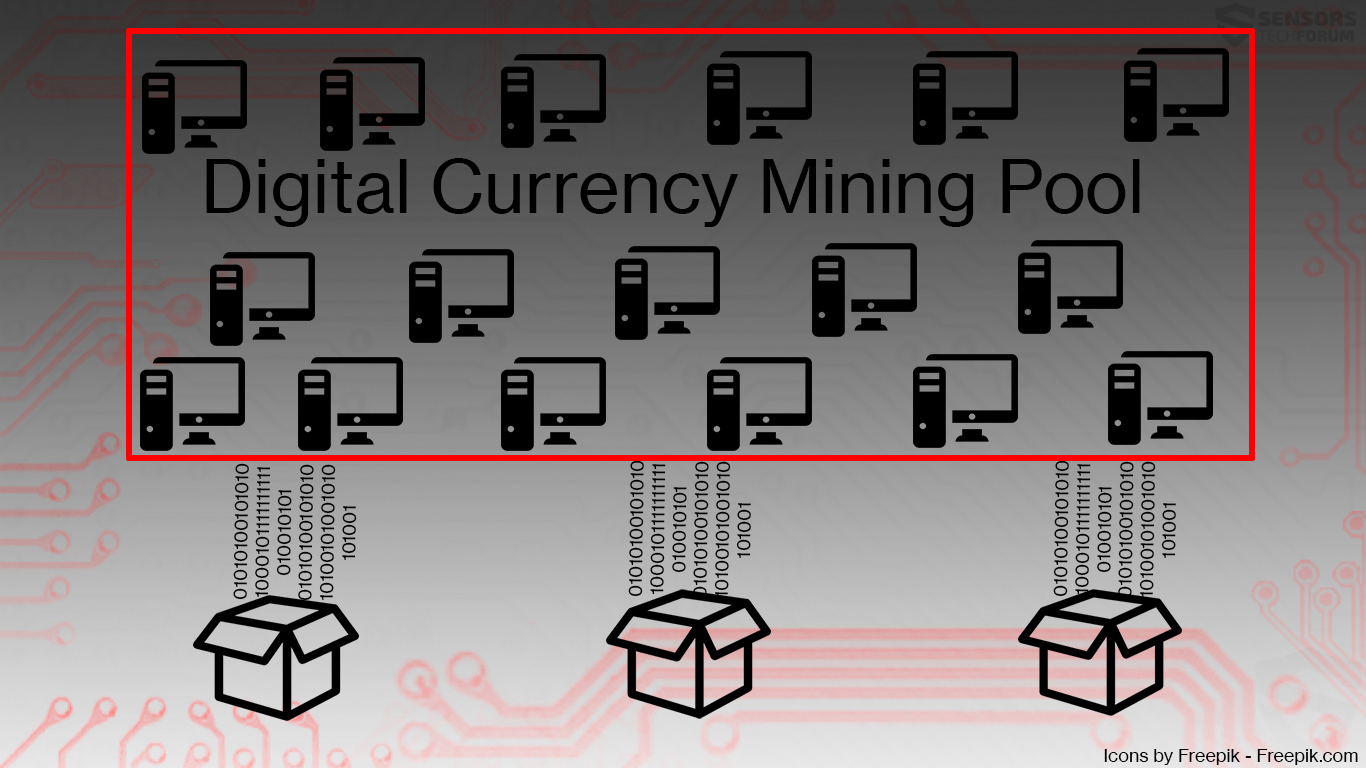This article reveals how to remove the vshub.exe Monero cryptocurrency miner virus from your computer.
The malicious process vshub.exe is classified as a virus that utilizes PC resources to mine for Monero cryptocurrency. As vshub.exe can occupy a high percentage of the CPU usage for extended period аn infection with it can lead to poor system performance and permanent damage of essential PC components. Additionally, the malicious vshub.exe is believed to have Trojan capabilities that can allow it to steal sensitive information from the compromised machine. The vshub.exe Monero miner virus has to be detected and entirely removed from the computer on time.

Threat Summary
| Name | vshub.exe |
| Type | Miner Trojan Horse |
| Short Description | Aims to use CPU’s or GPU’s resources of corrupted computer to mine for Monero. |
| Symptoms | After infection the miner overloads the CPU for extended periods of time which results in poor PC performance and system crashes. |
| Distribution Method | Via malicious e-mail spam attachments, infected websites or fake installation setups. |
| Detection Tool |
See If Your System Has Been Affected by malware
Download
Malware Removal Tool
|
User Experience | Join Our Forum to Discuss vshub.exe. |

Mingc.exe Miner – Distribution Methods
The vshub.exe Monero miner virus is a newly discovered threat that can infect online users worldwide. Its distribution may happen via several methods.
Links that land you on compromised web pages can initiate an automatic download of the malicious script on your computer. Hackers may post such links in spam email messages or use them in malvertising campaigns.
Massive spam email campaigns are also considered to be used as a way of vshub.exe Monero miner distribution. They are usually designed to trick you into downloading a corrupted file attachment that carries the malicious script. Once you open the malicious file on your PC it automatically starts the malicious vshub.exe process. So beware of emails that are trying to convince you to download file attachments especially if they are one of the following types:
→ .docm, .vbs, .wsf, .js, .exe

Mingc.exe Miner – More Details
Once vshub.exe miner virus is running on the system, it can cause severe damages on the compromised machine. First it creates a Windows task called ServiceRun that automatically launches the file executable vshub.exe which is located at:
→C:\ProgramData\vshub.exe
This action triggers the Monero mining process on your computer. Once the device is connected to the predefined miming pools it starts utilizing the power of your CPU to mine for Monero cryptocurrency.
As a result, its developers receive good revenue while your CPU is exposed at risk of permanent damage. Other side effects after infection with vshub.exe miner virus are frequent system slowdowns, freezes and even crashes.
The vshub.exe Monero miner is also considered to have Trojan horse capabilities which may allow it to download and install additional malware on the host and gain access to your files, email address, login details, banking credentials, etc.

How to Remove Vshub.exe Miner Virus from Your Computer
The detection of the malicious vshub.exe miner virus is not that easy. It is a persistent threat that may remain hidden on the system for a long time. That’s why security experts recommend the help of a professional anti-malware tool for its detection and removal. Such a tool guarantees maximum removal efficiency and future malware protection.
Preparation before removing vshub.exe.
Before starting the actual removal process, we recommend that you do the following preparation steps.
- Make sure you have these instructions always open and in front of your eyes.
- Do a backup of all of your files, even if they could be damaged. You should back up your data with a cloud backup solution and insure your files against any type of loss, even from the most severe threats.
- Be patient as this could take a while.
- Scan for Malware
- Fix Registries
- Remove Virus Files
Step 1: Scan for vshub.exe with SpyHunter Anti-Malware Tool



Step 2: Clean any registries, created by vshub.exe on your computer.
The usually targeted registries of Windows machines are the following:
- HKEY_LOCAL_MACHINE\Software\Microsoft\Windows\CurrentVersion\Run
- HKEY_CURRENT_USER\Software\Microsoft\Windows\CurrentVersion\Run
- HKEY_LOCAL_MACHINE\Software\Microsoft\Windows\CurrentVersion\RunOnce
- HKEY_CURRENT_USER\Software\Microsoft\Windows\CurrentVersion\RunOnce
You can access them by opening the Windows registry editor and deleting any values, created by vshub.exe there. This can happen by following the steps underneath:


 Tip: To find a virus-created value, you can right-click on it and click "Modify" to see which file it is set to run. If this is the virus file location, remove the value.
Tip: To find a virus-created value, you can right-click on it and click "Modify" to see which file it is set to run. If this is the virus file location, remove the value.Step 3: Find virus files created by vshub.exe on your PC.
1.For Windows 8, 8.1 and 10.
For Newer Windows Operating Systems
1: On your keyboard press + R and write explorer.exe in the Run text box and then click on the Ok button.

2: Click on your PC from the quick access bar. This is usually an icon with a monitor and its name is either “My Computer”, “My PC” or “This PC” or whatever you have named it.

3: Navigate to the search box in the top-right of your PC's screen and type “fileextension:” and after which type the file extension. If you are looking for malicious executables, an example may be "fileextension:exe". After doing that, leave a space and type the file name you believe the malware has created. Here is how it may appear if your file has been found:

N.B. We recommend to wait for the green loading bar in the navigation box to fill up in case the PC is looking for the file and hasn't found it yet.
2.For Windows XP, Vista, and 7.
For Older Windows Operating Systems
In older Windows OS's the conventional approach should be the effective one:
1: Click on the Start Menu icon (usually on your bottom-left) and then choose the Search preference.

2: After the search window appears, choose More Advanced Options from the search assistant box. Another way is by clicking on All Files and Folders.

3: After that type the name of the file you are looking for and click on the Search button. This might take some time after which results will appear. If you have found the malicious file, you may copy or open its location by right-clicking on it.
Now you should be able to discover any file on Windows as long as it is on your hard drive and is not concealed via special software.
vshub.exe FAQ
What Does vshub.exe Trojan Do?
The vshub.exe Trojan is a malicious computer program designed to disrupt, damage, or gain unauthorized access to a computer system. It can be used to steal sensitive data, gain control over a system, or launch other malicious activities.
Can Trojans Steal Passwords?
Yes, Trojans, like vshub.exe, can steal passwords. These malicious programs are designed to gain access to a user's computer, spy on victims and steal sensitive information such as banking details and passwords.
Can vshub.exe Trojan Hide Itself?
Yes, it can. A Trojan can use various techniques to mask itself, including rootkits, encryption, and obfuscation, to hide from security scanners and evade detection.
Can a Trojan be Removed by Factory Reset?
Yes, a Trojan can be removed by factory resetting your device. This is because it will restore the device to its original state, eliminating any malicious software that may have been installed. Bear in mind that there are more sophisticated Trojans that leave backdoors and reinfect even after a factory reset.
Can vshub.exe Trojan Infect WiFi?
Yes, it is possible for a Trojan to infect WiFi networks. When a user connects to the infected network, the Trojan can spread to other connected devices and can access sensitive information on the network.
Can Trojans Be Deleted?
Yes, Trojans can be deleted. This is typically done by running a powerful anti-virus or anti-malware program that is designed to detect and remove malicious files. In some cases, manual deletion of the Trojan may also be necessary.
Can Trojans Steal Files?
Yes, Trojans can steal files if they are installed on a computer. This is done by allowing the malware author or user to gain access to the computer and then steal the files stored on it.
Which Anti-Malware Can Remove Trojans?
Anti-malware programs such as SpyHunter are capable of scanning for and removing Trojans from your computer. It is important to keep your anti-malware up to date and regularly scan your system for any malicious software.
Can Trojans Infect USB?
Yes, Trojans can infect USB devices. USB Trojans typically spread through malicious files downloaded from the internet or shared via email, allowing the hacker to gain access to a user's confidential data.
About the vshub.exe Research
The content we publish on SensorsTechForum.com, this vshub.exe how-to removal guide included, is the outcome of extensive research, hard work and our team’s devotion to help you remove the specific trojan problem.
How did we conduct the research on vshub.exe?
Please note that our research is based on an independent investigation. We are in contact with independent security researchers, thanks to which we receive daily updates on the latest malware definitions, including the various types of trojans (backdoor, downloader, infostealer, ransom, etc.)
Furthermore, the research behind the vshub.exe threat is backed with VirusTotal.
To better understand the threat posed by trojans, please refer to the following articles which provide knowledgeable details.




